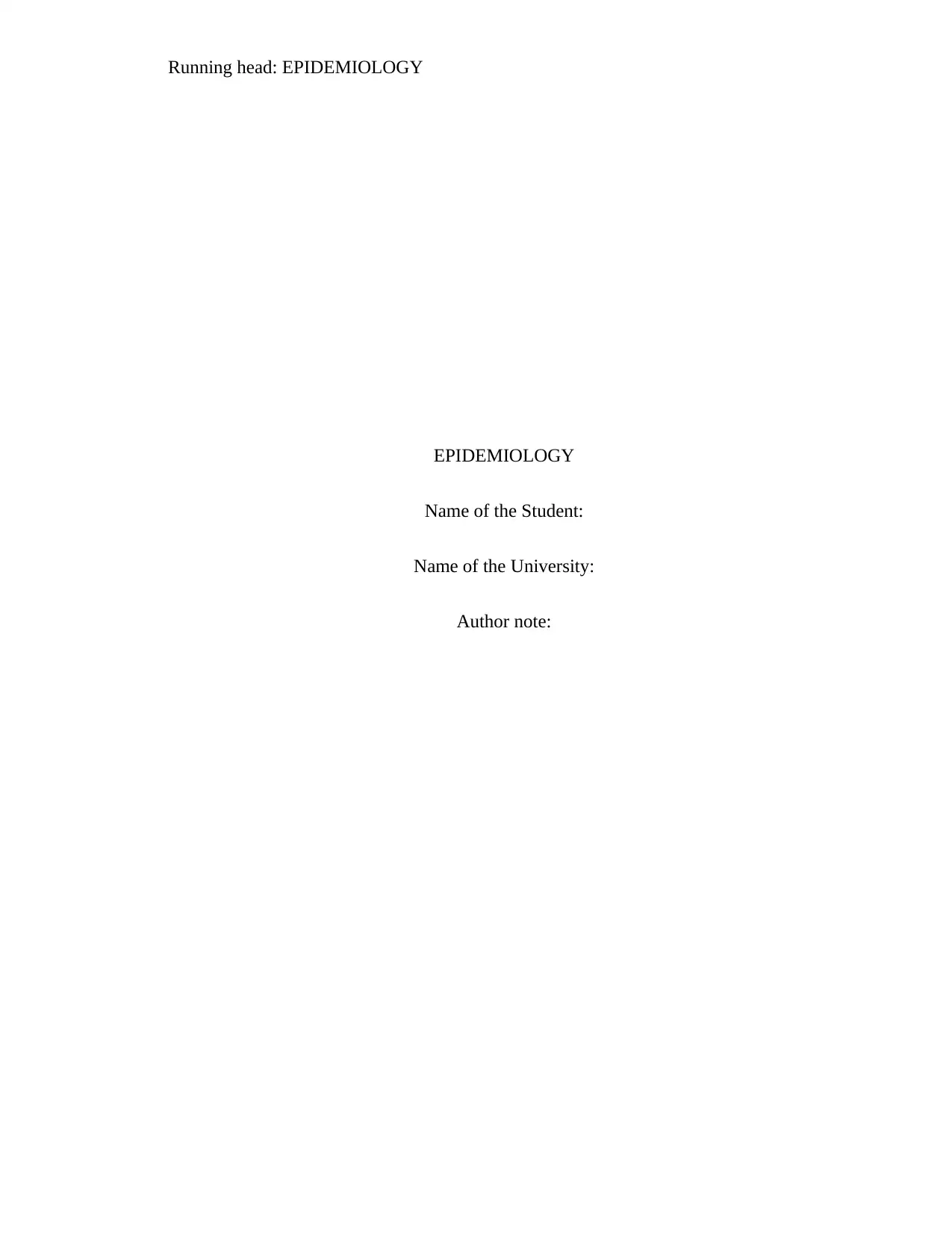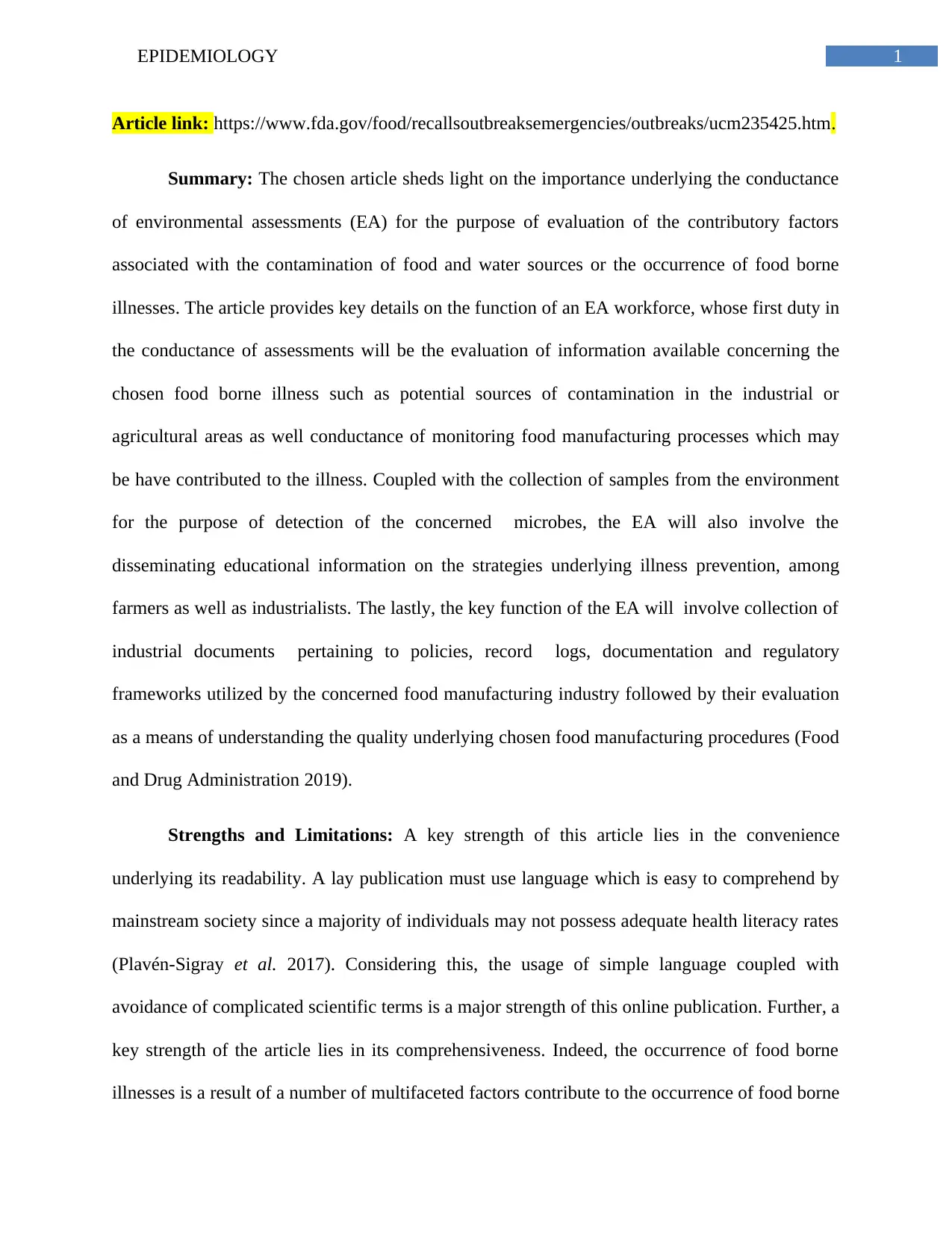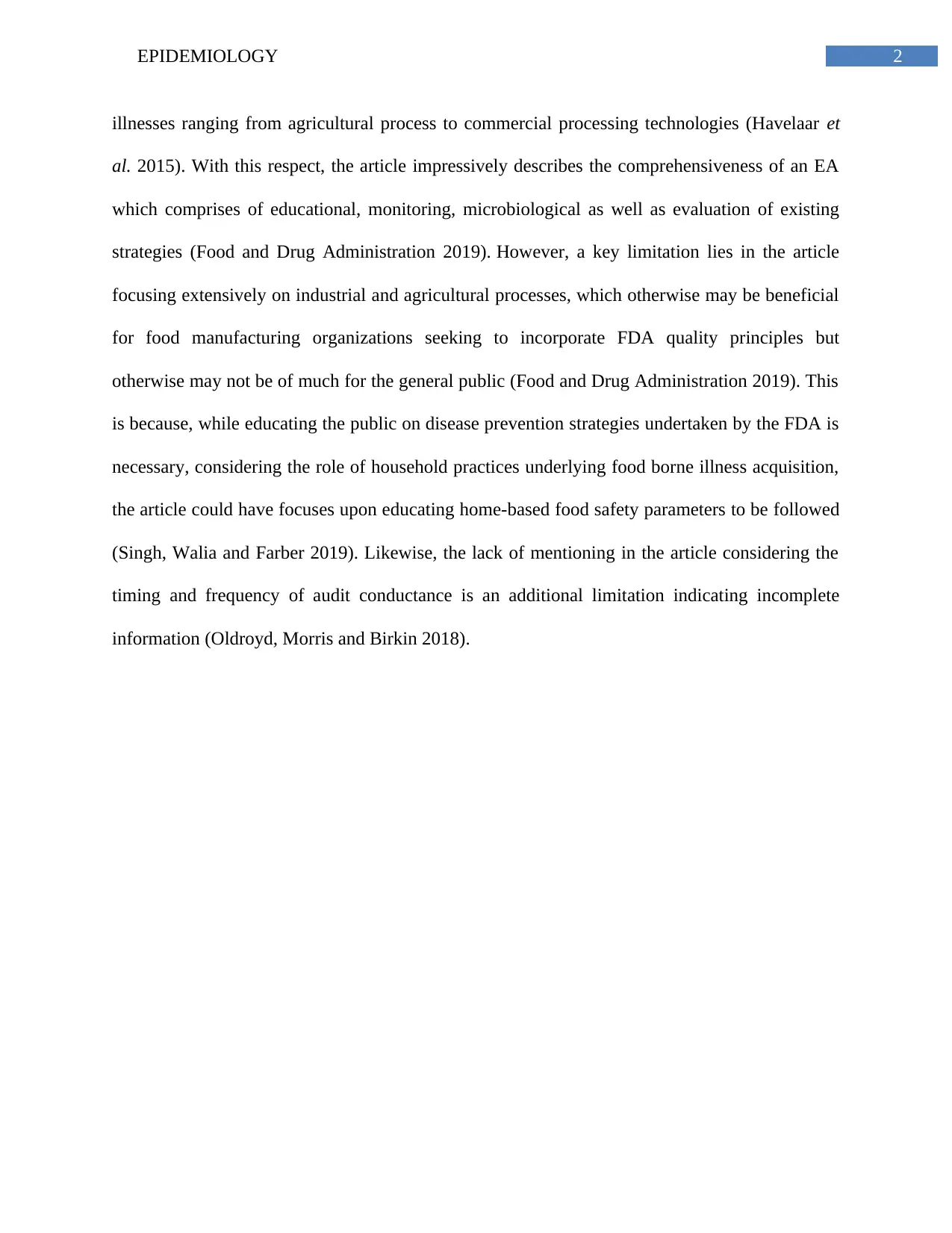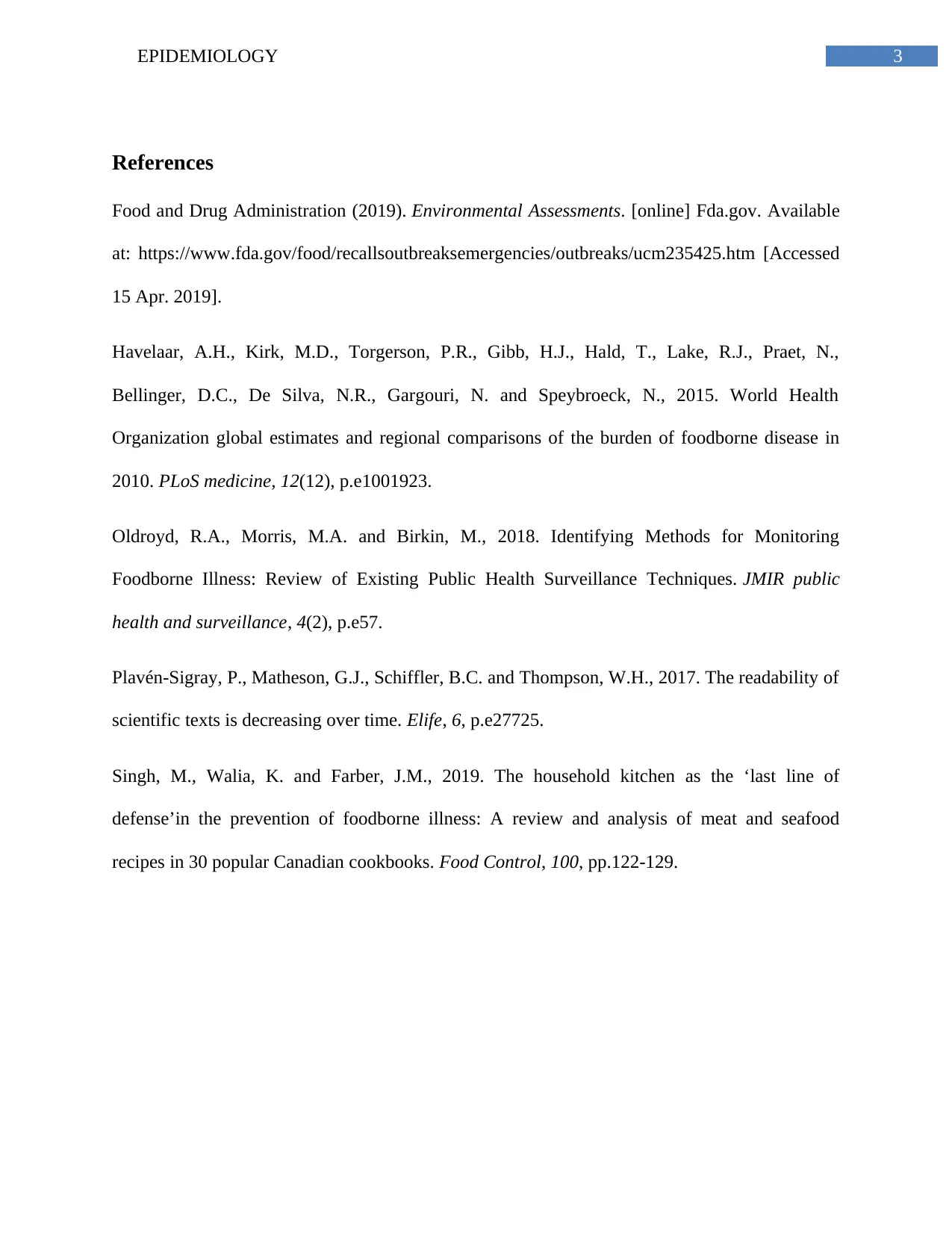University Epidemiology Report: Foodborne Illness Article Review
VerifiedAdded on 2023/01/19
|4
|779
|53
Report
AI Summary
This report provides an analysis of an epidemiology article concerning foodborne illnesses, specifically focusing on the role of environmental assessments (EAs) in identifying and mitigating contamination sources. The article, sourced from the FDA, emphasizes the importance of EAs in evaluating factors contributing to foodborne illnesses, including the assessment of contamination sources in agricultural and industrial areas, as well as monitoring food manufacturing processes. The report highlights the strengths of the article, such as its readability and comprehensiveness, while also acknowledging limitations, including its focus on industrial processes rather than household practices and the lack of detail regarding the timing and frequency of audits. The report references the FDA's guidelines, and other research articles to provide a comprehensive overview of the topic and its implications for public health.
1 out of 4





![[object Object]](/_next/static/media/star-bottom.7253800d.svg)